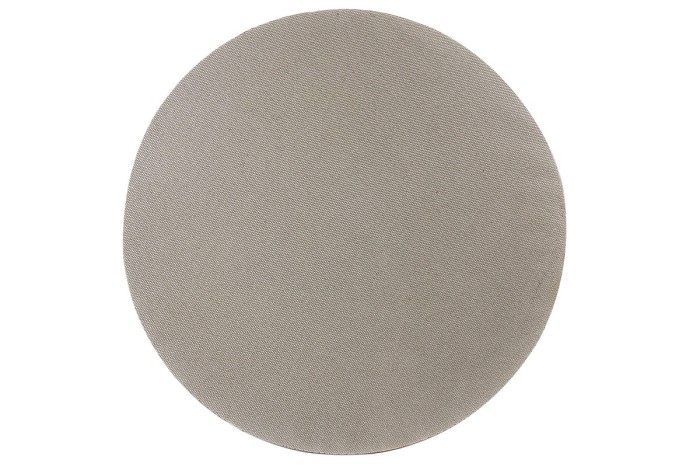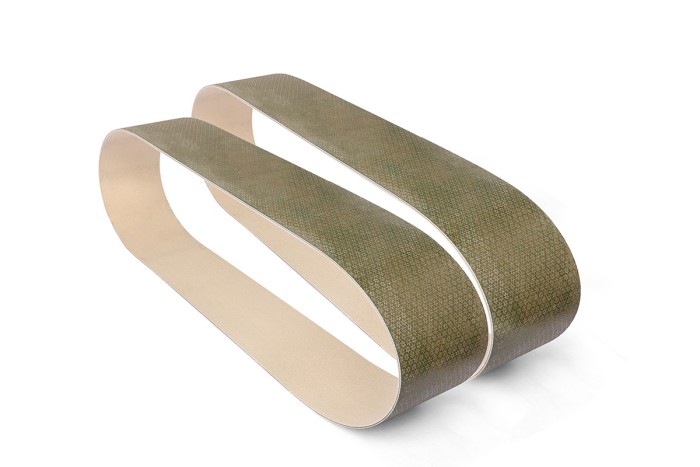Choosing the Right Sandpaper for Every Job
Sandpaper is a versatile tool with abrasive properties that is an important component in a variety of applications, with the ability to smooth surfaces, remove unwanted material, and enhance friction. Understanding the different types and roughness levels of sandpaper is critical to ensuring its effectiveness for a specific task. Additionally, choosing the right sandpaper is consistent to achieve the best results on a variety of projects.
Sandpaper types include diamond sandpaper, artificial emery paper, and glass sandpaper, each customized for a different use.
Material
1. Metal
Metal sandpaper is composed of abrasives such as aluminum oxide, silicon carbide, and paper-based materials. It has basic properties such as coarse particle size, high cutting force, and wear resistance. It can perform various treatments such as efficient deburring, grinding, and rust removal on metal.
The choice of metal sandpaper depends on precise consideration of the metal surface material, intended use, and the specific requirements of the treatment. This strategic approach ensures optimal utilization of metal sandpaper, consistent with the diversity of metalworking applications and the different complexities associated with each task. Therefore, understanding the unique properties and specifications of metal sandpaper enables individuals to make informed decisions that will increase the effectiveness and precision of metal surface treatments.
In practical applications, the particle size of metal sandpaper is often coarser, and common specifications are 40#, 60#, 80#, and above. These designations correspond to specific grit levels, each suitable for a different level of material removal and surface refinement. Where a finer finish is required, the use of finer grit sandpaper for polishing becomes critical, emphasizing the importance of precision and attention to detail in achieving a superior finish.
Additionally, the versatility of metal sandpaper extends to meet different metalworking needs, including applications such as deburring, smoothing rough surfaces, and eliminating rust and corrosion, reflecting the key role it plays in the repair and enhancement of metal parts.
2. Diamond sandpaper
Diamond sandpaper, with its extraordinary hardness, is the epitome of a pioneering solution for grinding materials of different hardness levels with outstanding effectiveness. Its ability to provide detailed and precise grinding while minimizing damage to the parts being handled makes it a game-changing tool in precision manufacturing processes.
In the field of aircraft manufacturing, precision grinding of parts is a key requirement, and the application of diamond sandpaper significantly improves grinding efficiency. By leveraging the unique properties of diamond sandpaper, manufacturers can achieve unparalleled precision when processing parts, reducing the risk of damage and improving the overall quality of manufactured aircraft parts. In addition, the manufacturing process of automobiles and motorcycles has also been profoundly affected by the addition of diamond sandpaper. In tasks such as grinding engines and brakes, diamond sandpaper has been proven to help increase grinding efficiency while reducing the likelihood of part damage. This transformative development streamlines production processes improves the quality of automotive parts, and highlights the exceptional versatility and impact of diamond abrasive paper in different industrial applications. Furthermore, in the context of integrated circuit manufacturing and testing, where high-precision grinding work is an integral part of the production process, diamond sandpaper has become an invaluable asset. Its ability to increase grinding efficiency while minimizing damage to precision electronic components puts it at the forefront of innovation in the semiconductor industry, heralding a new era of precision and reliability in integrated circuit manufacturing.
Uses of sandpaper
1. Polishing
Polishing is an integral part of surface preparation and refinement and depends on the careful selection of sandpaper grades to achieve the desired smoothness and texture. Choosing the right grade of sandpaper depends on the specific characteristics of the surface being treated, with the ultimate goal being a seamless, polished surface. In the case of rough surfaces, use coarser sandpaper to lay the foundation for subsequent finer polishing, ultimately resulting in a smooth and delicate surface. Instead, for surfaces with inherent smoothness, a combination of fine sandpaper becomes the primary tool for achieving the desired finish.
To account for the variety of sandpaper mesh options, the selection process requires a nuanced understanding of the interplay between surface properties and sandpaper specifications. While 800-grit sandpaper suffices for initial grinding and smoothing tasks, upgrading to 1000, 1200, 1500, and 2000-grit designations provides increasingly finer polishes to the treated surface, ultimately achieving a surface finish unparalleled.
2. Defect treatment
Known for its ability to effectively polish and smooth surfaces to eliminate imperfections, fine-grain sandpaper is a cornerstone tool in the pursuit of perfect surface finishing. The versatility and precision of fine-grit sandpaper are emphasized by its different mesh specifications, with options of 800 mesh, 1000 mesh, 1200 mesh, etc., providing a variety of options for defect treatment. The process of selecting the most appropriate sandpaper involves careful evaluation of the extent of imperfections present on the surface as well as the materials that make up the surface.
For surfaces with obvious imperfections, the initial use of coarser sandpaper is essential to remove the obvious imperfections. Subsequently, judiciously upgrading to a finer sandpaper grade facilitates a meticulous polishing process that eliminates imperfections and achieves a refined, smooth surface.
In the pursuit of sanding defects, care must be taken to avoid over-sanding or inadvertently causing new damage to the surface. Gently applied and careful attention will ensure that the defect treatment process unfolds smoothly and efficiently, resulting in a flawless and refined surface.
Type
1. Sanding disc
The distinguishing feature of a sanding disc is that it consists of a paper or cloth substrate interwoven with abrasives, providing a dynamic interaction of materials that facilitates optimal surface grinding. The ability to meet different grit sizes according to specific requirements highlights the inherent versatility and precision of sandpaper, helping to develop customized surface treatments based on the unique characteristics of the materials being processed. The process of selecting an abrasive sanding disc magnifies the complexity of surface refinement and requires a keen evaluation of the hardness of the material, the purpose of the grinding process, and the specifications and grit grades necessary to achieve the desired sanding effect. Compared to traditional manual sanding methods, the unique advantages of sanding discs become apparent, resulting in increased sanding efficiency and enhanced sanding results, thereby improving the overall quality of the surface finish.

2. Sanding belt
The fundamental difference in sanding belts lies in their composition, which provides strong tensile strength and wear resistance. This durability allows the belt to adapt to a variety of surface shapes, effectively overcoming the limitations of traditional sanding materials and significantly enhancing its surface refinement effectiveness. In addition to adaptability, the choice of abrasive type and grit size in the sanding belt has become a key aspect, giving practitioners the flexibility to tailor grinding and polishing results to specific needs. This meticulous approach ensures that each material receives a custom treatment, resulting in unparalleled surface finishing accuracy that exceeds traditional methods.
Meticulous attention to detail is critical when deploying sanding belts. Careful consideration in choosing the right grinder and speed, coupled with precise calibration of grinding pressure and movement speed, are key prerequisites for safeguarding the integrity of the materials being processed. With this careful approach, practitioners can confidently approach the complex problem of surface refinement, fully utilizing the potential of the abrasive belt to overcome surface imperfections, scratches, and oxide layers, ultimately achieving a smooth and fine surface.

-
Online service
-
Official wechat account

-
QQ:40933769
-
E-mail:sales@z-lion.com
Online Message
Please feel free to give your inquiry in the form below. We will reply you in 24 hours.

